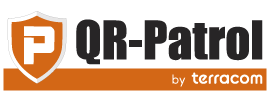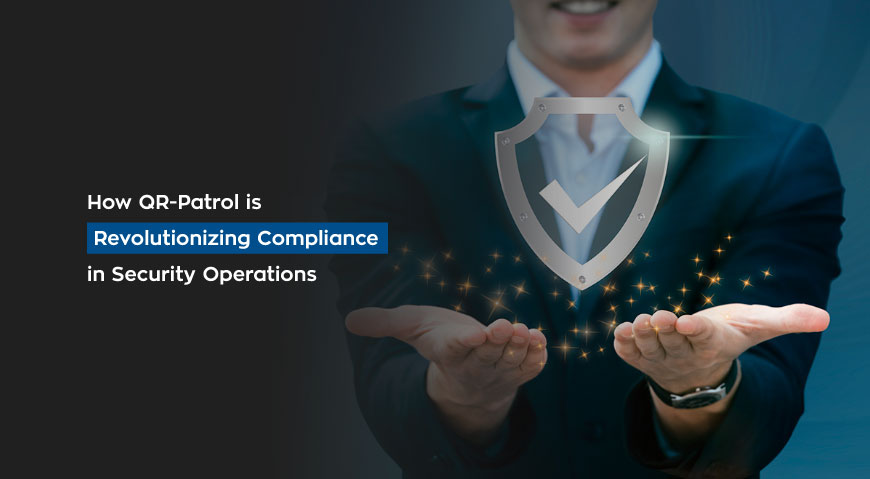- Posted by: blignos
- Published: 22-01-2024
- Category: Security articles
How QR-Patrol is Revolutionizing Compliance in Security Operations
Compliance in security operations plays a crucial role in establishing trust and ensuring a high level of service with various legal and regulatory requirements. With QR Patrol, being one step ahead with your operations compliance can provide a dynamic and efficient approach to security. In this article, we will delve into the goals of security compliance, the challenges faced by security compliance management, and how QR-Patrol is leading the charge in transforming the security industry.
The Goals of Security Compliance
Security compliance is a multifaceted endeavor with the primary goal of adhering to legal standards, regulatory requirements, industry best practices, and contractual obligations to ensure the security of data in possession. Various regulations, such as the European General Data Protection Act (GDPR), Sarbanes-Oxley Act (SOX), Gramm-Leach-Bliley Act, Health Insurance Portability and Accountability Act (HIPAA), and Payment Card Industry Data Security Standard (PCI-DSS), set the benchmarks for security compliance.
Fulfilling these obligations is not only a legal imperative but also crucial for avoiding government investigations, monetary penalties, lost business, and other costly consequences. Moreover, robust security compliance contributes to protecting a company's reputation, building customer trust, and improving data management capabilities.
Security vs. Compliance: Key Considerations
To comprehend the impact of QR-Patrol on security compliance, it's essential to understand the distinction between security and compliance. Security focuses on internal safeguards, protecting critical assets from a myriad of threats, both external and internal. On the other hand, compliance involves meeting external standards, regulations, and legal requirements specific to a sector or jurisdiction.
While compliance ensures adherence to specific guidelines, it doesn't guarantee complete security. Relying solely on compliance standards can create a false sense of security, leaving gaps that malicious actors could exploit. The ideal approach is a strategic blend of both security and compliance, acknowledging the unique risks of an organization and actively identifying and mitigating them.
Security Compliance Management Challenges
Several challenges can impede effective security compliance management, including the rapidly changing security landscape, distributed environments across multiple platforms, reliance on manual processes, a multi-country presence, and coordination issues in large teams. Overcoming these challenges requires proactive measures, including automation, continuous monitoring, and streamlined communication among teams.
Security Compliance Laws and Standards You Should Know
In the complex landscape of data protection and cybersecurity, several critical regulations shape the course for organizations. Some of these include GDPR, HIPAA, PCI DSS, ISO/IEC 27001, CCPA, FedRAMP and SOX. Adhering to these standards is not only a legal necessity but a crucial aspect of maintaining a secure and compliant organization.
Best Practices for Security Compliance Management
To enhance security compliance management, organizations should implement a cybersecurity compliance program, promote team communication, automate controls, ensure consistent patching, and adopt continuous monitoring. Additionally, connecting various management tools for distributed environments through APIs and using platforms like QR Patrol can streamline compliance risk management.
The Changing Landscape of Security and Compliance
As we step into 2024, the landscape of security and compliance is undergoing significant changes. Security and compliance are evolving beyond mere policies and processes, becoming enterprise-wide initiatives. New compliance frameworks and legislation continue to emerge, emphasizing the need for organizations to remain flexible and focus on strengthening their overall security posture.
In QR Patrol, we are taking on a more strategic and collaborative role nowadays, as we’re working to prevent security incidents rather than merely responding to them. Automation is becoming a crucial tool in our security arsenal, as working with organizations that prioritize the automation of security analytics and operations is our main focus for the years ahead.
Continuous Compliance: A Dynamic Approach
In this dynamic landscape, continuous compliance emerges as a game-changer. QR-Patrol, as a key player in this space, is transforming the approach to regulatory adherence and data protection. Continuous compliance ensures organizations are always audit-ready by incorporating real-time monitoring, automated checks, and proactive remediation. This approach not only meets compliance standards but also fosters a culture of constant improvement and proactive risk management.
Implementing Continuous Compliance
Successful implementation of continuous compliance requires organizations to establish a robust baseline of compliance and security requirements, embrace automation, and cultivate a culture of compliance. While challenges such as integrating diverse systems and resistance to change may arise, overcoming these hurdles is crucial for unlocking the full potential of continuous compliance.
Future of Continuous Compliance and Security
Looking ahead, the future of continuous compliance holds promise in shaping the security landscape. Advancements in technology, including Artificial Intelligence and Machine Learning, will enhance the capabilities of continuous compliance tools. Increased collaboration between industry stakeholders and regulatory bodies will lead to more robust and standardized compliance frameworks.
As data privacy regulations tighten, continuous compliance will become even more critical. Organizations that embrace continuous compliance as an integral part of their security strategy will be better positioned to navigate the evolving cybersecurity landscape successfully. QR-Patrol's role in this paradigm shift is undeniable, and its innovative approach to security operations compliance is setting new standards for the industry.
Written by Maria-Christina Antoniou

















